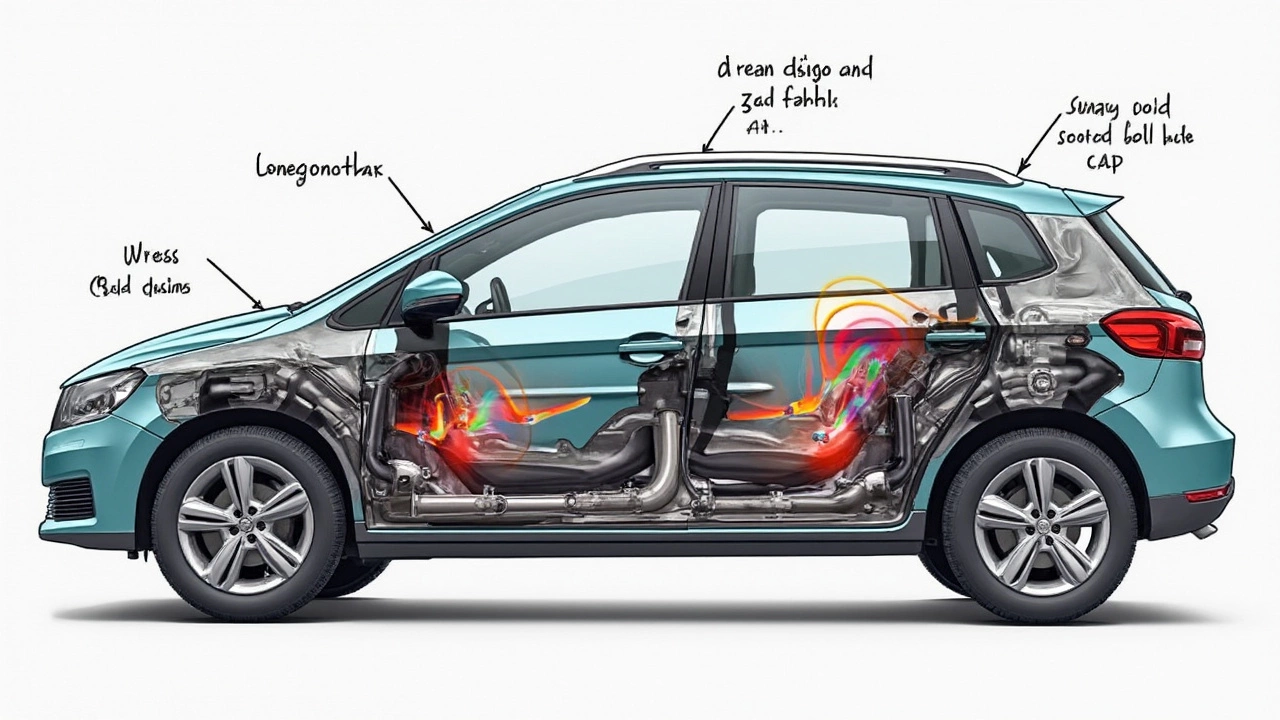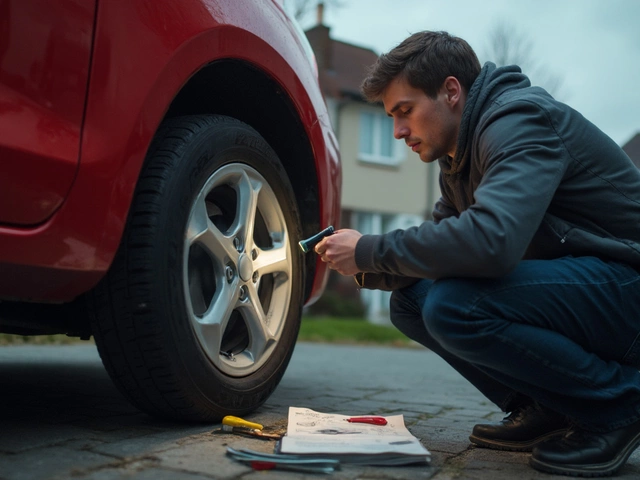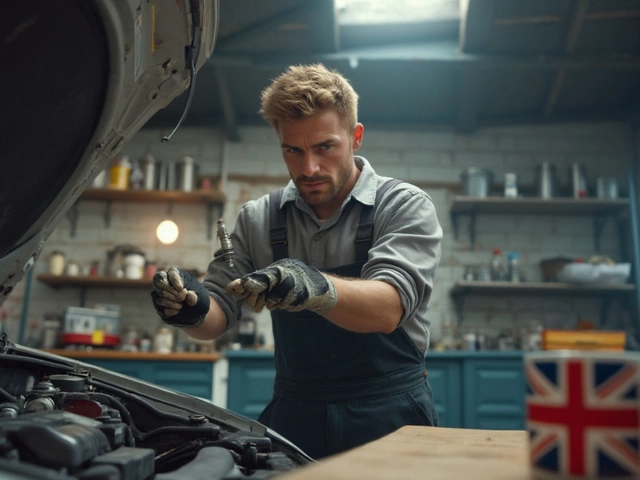Hear an odd thump every time you drive over a bump? Or maybe your car groans like a rusty gate every time you turn? Strange noises from your suspension aren’t something to brush off—they usually mean something’s off under the hood, or more likely, under the car.
Some folks try to ignore these sounds, hoping they’re just part of getting older or maybe a rock stuck somewhere. But these noises are usually your car’s way of asking for help. It’s way cheaper to pay attention now than wait until you’re stranded on the side of the road—or facing a massive repair bill.
The good news: suspension noises tend to fall into clear groups. Knowing what each sounds like makes it easier to figure out what’s broken, and helps you decide if it’s something you can live with for a bit, or if you need a mechanic pronto. Let’s break down three common noises and what they could mean for your wheels.
- Clunking: The Signature Sound of Worn Parts
- Squeaking: Bushings Crying for Help
- Rattling: Loose Bits Making a Scene
- How to Check and What to Do Next
Clunking: The Signature Sound of Worn Parts
That deep, hollow “clunk” noise coming from your suspension is usually the calling card of something loose or broken. You’ll probably hear it when you drive over speed bumps, potholes, or even when you hit the brakes a little hard. Most of the time, it’s not just random bad luck—it’s a sign that a part in your suspension is worn out, out of place, or not as tight as it should be.
The big players here are ball joints, control arms, sway bar links, and tie rods. When any of these wear out or lose their bushing, their connections start to bang against the frame or other metal. Imagine two pieces of metal knocking together every time your wheel moves up or down—that’s the clunk. If left alone, what starts as an annoying sound could lead to poor steering or even a total part failure while you’re driving.
Here’s a breakdown of the parts that cause clunking most often:
- Ball joints – The most common culprit. When the grease dries up or the boot breaks, the joint wears out. Clunk city.
- Control arm bushings – When these crack or slip, the arm has extra wiggle room to slam into the frame.
- Sway bar links – When these are shot, especially on bumpy roads, they start knocking loudly.
- Tie rod ends – When loose, they make knocking noises especially when turning.
To give you an idea of how common this is, check out this quick table showing parts that most often produce a clunking sound in the suspension and how frequently they’re found bad in regular shop checks:
| Suspension Part | % Found Bad in Inspections |
|---|---|
| Ball Joints | 37% |
| Control Arm Bushings | 25% |
| Sway Bar Links | 18% |
| Tie Rod Ends | 11% |
| Others | 9% |
How can you spot if it’s a real issue? Try parking, turning your steering wheel left and right while not moving—listen for the clunk. Or have a buddy bounce each corner of your car while you squat near the wheel. If you hear that signature clunk, you’ve probably found your cause. Never let a suspension noise go unchecked—these sounds don’t fix themselves, and catching the problem early can save you from much bigger headaches down the road.
Squeaking: Bushings Crying for Help
If your car sounds like a bed frame in an old movie every time you go over a speed bump or hit a pothole, there’s a good chance your suspension bushings are the culprits. Bushings are basically small rubber or polyurethane cushions that sit between moving metal parts. Their main job is to absorb shocks and keep rattles and squeaks out of the ride. But when those bushings dry out, crack, or wear down, they can't do their job — and all that metal-on-metal contact makes itself known with loud squeaks.
These squeaks often show up when you go over bumps, make tight turns, or drive on rough or uneven roads. Here’s a tip: If the noise is worse in cold, dry weather or after rain, the bushings are probably either dried or have lost their lubrication.
- Worn-out bushings are super common on cars with over 70,000 miles, especially if you drive in stop-and-go city traffic or on badly paved streets.
- People often mistake squeaky bushings for issues with shocks and struts, but a quick check can save you from replacing the wrong part.
- If you notice suspension noises mainly during slow speed bumps or parking lot turns, it's probably bushings, not bigger suspension pieces.
Here’s a look at how common bushing squeaks are based on car mileage:
| Mileage | Chance of Bushing Noise |
|---|---|
| Under 50,000 | Low (under 10%) |
| 50,000–100,000 | Moderate (up to 30%) |
| 100,000+ | High (over 50%) |
If you hear squeaking, here’s what you can do:
- Listen for noise when turning or going over bumps at low speed. Try to pinpoint if the noise is from the front or back.
- Do a visual check with a flashlight. Look for cracked or dry bushings, especially where control arms or sway bars attach.
- A spray of silicone lubricant on the bushings can temporarily kill the squeak, which helps you confirm the diagnosis (but it’s not a real fix).
Bushing replacement isn’t usually expensive, but waiting can let the problem get much worse. Plus, ignoring it can kill your ride comfort and leave you with bigger suspension repairs down the road.

Rattling: Loose Bits Making a Scene
If your ride sounds like a toolbox got dumped under the car every time you hit a pothole or rough patch, pay attention. That suspension noises rattling is often a dead giveaway that something, somewhere, just isn’t holding together like it should.
Usually, this has to do with parts working loose—a bracket, clip, or fastener that isn’t gripping like it’s supposed to. In a lot of cases, heat, cold, rust, and simple wear eat away at bushings, bolts, sway bar links, or strut mounts. Once these get slack, the whole system starts making a racket.
Here’s a quick cheat sheet for common causes of rattling in your suspension:
- Sway bar links: These links connect the sway bar to the suspension. If one pops loose or the bushings wear out, you get a constant rattle driving over uneven surfaces.
- Heat shields: Sometimes the noise isn’t even from a suspension part, but a loose heat shield rattling near the wheel well. Drivers mix this up with suspension trouble all the time.
- Shock absorber or strut mounts: If these start to go, you might hear a tinny rattle that quickly gets worse as things deteriorate.
- Loose bolts or nuts: Mechanics sometimes miss tightening a key bolt after a repair, or parts just shake loose after too many bumpy roads.
According to repair shop surveys from the last decade, nearly 30% of cars brought in for rattling noises had an issue with sway bar links or bushings. Here’s a simple look at what gets flagged most often:
| Component | % of Reported Rattling Cases |
|---|---|
| Sway Bar Links/Bushings | 30% |
| Shock/Strut Mounts | 25% |
| Heat Shields | 15% |
| Loose Fasteners | 20% |
| Other/Unknown | 10% |
One quick tip: try going over a speed bump at low speed with the windows down and the radio off. Notice if the rattling is more noticeable over repeated bumps. If you do, it’s a solid clue something’s loose in the suspension zone, maybe a bracket or a link. Get under the car if you can, or ask a shop to check those connections and mounts—catching this early saves a lot of hassle down the line.
How to Check and What to Do Next
If you’re hearing odd noises coming from your suspension, don’t panic. You can do a few simple checks before you head to the mechanic—and sometimes even save yourself the trip. Here’s how you can figure out what’s up, step by step.
- Listen carefully. Pinpoint when the noise kicks in. Does it show up when you hit bumps, take corners, or go over speed bumps? Noticing what triggers the sound helps you narrow down where the issue might be.
- Pop the hood and take a peek. Look for visible issues around your suspension—cracked bushings, leaking shocks, or loose bolts. Don’t forget to check both sides, since problems aren’t always in the same spot.
- Try the bounce test. Push down hard on each corner of your car. If it bounces more than once before settling or creaks loudly, your shocks or struts probably have a problem.
- Jack up the car (make sure it’s secure). Grab the tire at 12 and 6 o’clock and wiggle. Excessive movement might mean worn ball joints. Try 3 and 9 o’clock, too; if it moves, you could be dealing with a bad tie rod end.
- Take a slow drive somewhere quiet. Roll the windows down and listen for where the suspension noises are coming from. Sometimes the road can mask the sound, so find a spot with less traffic if you can.
If you find obvious signs—like broken parts, leaking oil near your shocks, or extreme tire wear—book an appointment with your mechanic right away. Don’t try to DIY vital suspension jobs unless you know exactly what you’re doing. Some fixes need special tools and messing up can make things worse (or dangerous).
- Write down when you hear the noise. This helps the mechanic and might even save time on the diagnosis and labor costs.
- If your car starts to wander on the highway, or you lose steering control, tow it. Don’t risk driving. Some suspension failures can cause a complete loss of control.
- Stay on top of regular maintenance. A quick inspection during oil changes (or at least once a year) catches small stuff before it becomes a wallet-busting repair.
Getting ahead of suspension issues saves you money, time, and a lot of headaches. A little listening and a few checks go a long way toward keeping your ride safe and smooth.






